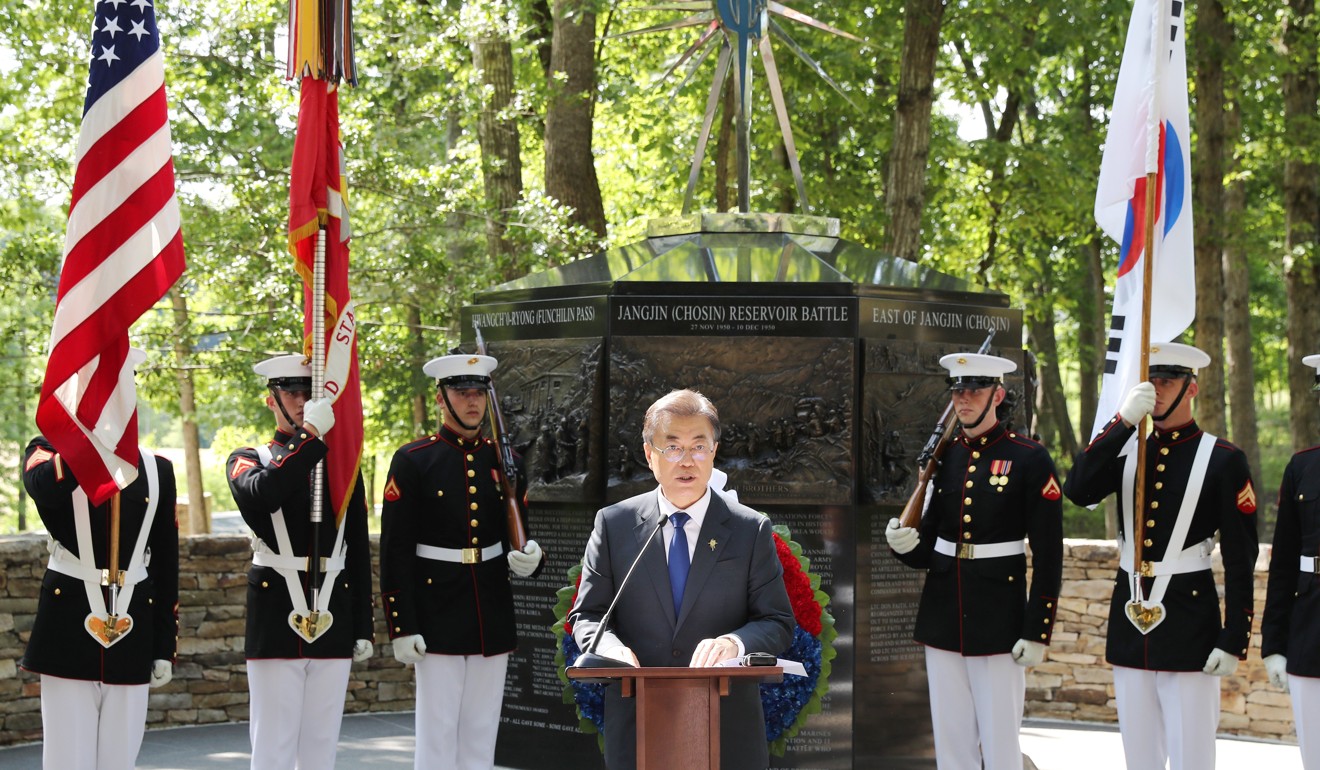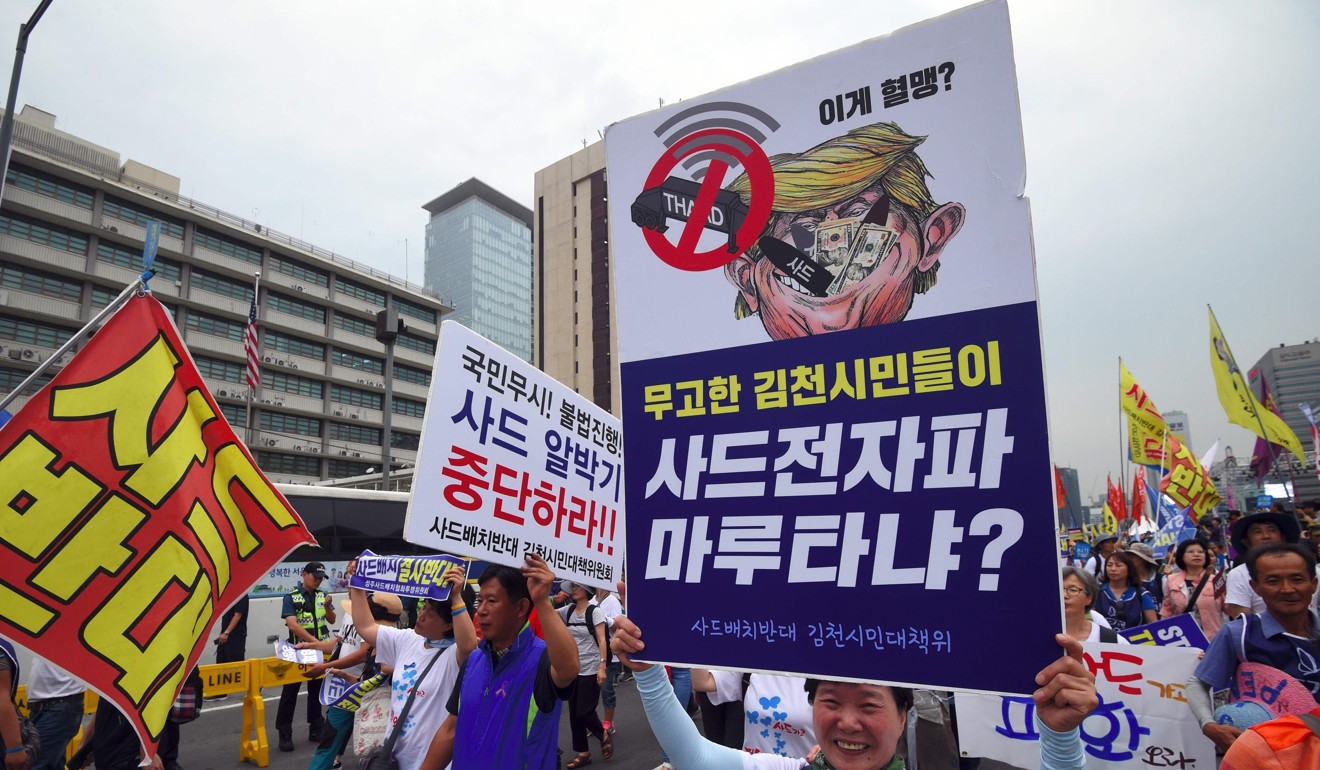
Moon in US: THAAD, China, Kim Jong-un on agenda as South Korean president meets Trump
Moon Jae-in to meet with Trump during his first foreign outing since being sworn in last month after a landslide election win
South Korea’s President Moon Jae-in has arrived in Washington on his first overseas trip since taking office, for planned talks with his US counterpart Donald Trump.
Moon, who backs engagement with nuclear-armed North Korea, was to meet Thursday (Friday morning Hong Kong time) with Trump during his first foreign outing since being sworn in last month after a landslide election win.
The talks between Moon and Trump, which begin with dinner and then formal talks, come amid intense wrangling over North Korea.
Trump’s National Security Adviser H.R. McMaster said that the US is preparing “all options” for North Korea, “because the president has made clear to us that he will not accept a nuclear power in North Korea and a threat that can target the United States.”
Watch: South Korean president lays wreath at war memorial
Late Wednesday, Moon offered an emotional tribute to US Marines who fought in a fierce battle in the Korean war that helped in the mass evacuation of Korean civilians, including his own parents. Moon said that without those American sacrifices, he would not be here today.
“Together we will achieve the dismantlement of North Korea’s nuclear programme, peace on the Korean Peninsula and eventually peace in Northeast Asia,” Moon said, after laying a wreath at a Marine Corps base in Quantico, Virginia.
On board his flight to the United States, Moon said Seoul and Washington should offer concessions to Pyongyang if it complies with their demands, according to multiple South Korean reports.

“Without rewarding North Korea for its bad actions, South Korea and the United States should closely consult what they may give the North in return for a nuclear freeze,” he said.
“We should start dialogue with North Korea,” he said, but with conditions, saying that “at least, North Korea should restrain itself from further nuclear and missile tests and promise a nuclear freeze before full-fledged dialogue for nuclear dismantlement can start.”
“A nuclear freeze is a gate to dialogue and the exit of the dialogue is a complete nuclear dismantlement.”

Washington, South Korea’s security guarantor, has more than 28,000 troops in the country to defend it from its communist neighbour, which has been intensifying missile tests - including five since Moon’s inauguration.
Pyongyang is seeking to develop nuclear-capable ballistic missiles that could reach the continental United States.
Trump has been pushing for tougher sanctions against Pyongyang to curb its nuclear ambitions and whose administration has said military action was a possibility.
Also expected to be high on the agenda is likely to be a controversial US missile defence system that has been installed in South Korea to guard against missile threats from the North.

Though parts of the Terminal High-Altitude Area Defence (THAAD) system are already in place, Moon suspended further deployment following a furious campaign of economic sanctions and diplomatic protests by Beijing against the US missile shield, dealing a blow to Washington’s regional security policy.
Officially, the delay is to allow for a new, comprehensive environmental impact assessment, but analysts say the move is a strategic one by Moon to delay the tricky diplomatic situation he inherited.
Moon’s conservative predecessor, who was impeached in a bribery scandal, took a hard line toward North Korea, similar to Trump.

Trump’s recent tweet “may suggest a turn in the strategy towards more direct sanctioning of Chinese companies, financial institutions, and individuals that have facilitated North Korean business in violation of US law,” Victor Cha, senior adviser and Korea chair at the Centre for Strategic and International Studies in Washington, said.
Additional reporting by Associated Press and Bloomberg

.png?itok=arIb17P0)